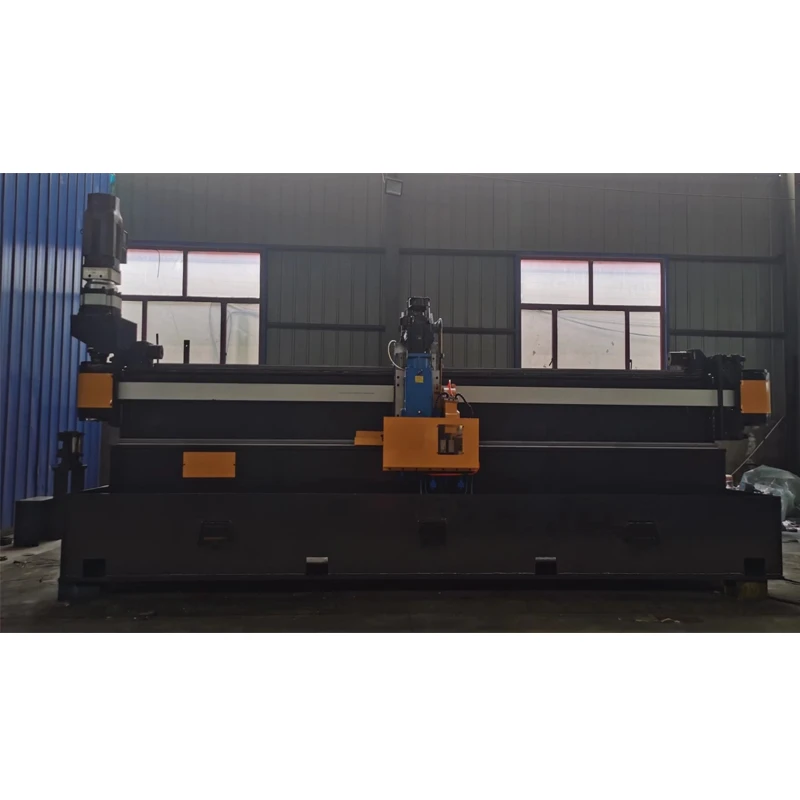Track Roll Forming Equipment for Precision Metal Fabrication and Production Efficiency
Understanding Track Roll Forming Machines An Essential Tool for Modern Manufacturing
In the ever-evolving landscape of modern manufacturing, efficiency and precision are paramount. One of the significant innovations that have been instrumental in this regard is the track roll forming machine. These machines are designed to streamline the production of various components used in a multitude of industries, including automotive, construction, and even electronics. This article aims to provide a comprehensive overview of track roll forming machines, highlighting their operational principles, advantages, and applications.
What is a Track Roll Forming Machine?
A track roll forming machine is a specialized piece of equipment that shapes metal sheets into specific profiles through a series of continuous bending processes. The “track” aspect refers to the machine's ability to produce metal tracks, which can be used for various applications, including railways, vehicle frames, and structural supports.
The core of the machine operates through a sequence of rollers, each meticulously designed to bend the metal progressively. Starting with a flat sheet of metal, the material is fed through a series of rollers, each exerting pressure to create the desired shape. This continuous process not only enhances precision but also significantly reduces waste material compared to traditional cutting methods.
Key Features and Components
Track roll forming machines comprise several key components that work in unison to ensure high-quality production
1. Feeding Mechanism This component helps in continuously feeding the flat metal sheet into the machine at a consistent speed. The feeding mechanism is crucial for maintaining synchronization with the rollers.
2. Roller Stations The heart of the machine, roller stations are where the bending occurs. Each roller is arranged strategically to create specific angles and shapes. The number of rollers can vary depending on the complexity of the desired profile.
3. Cut-off Saw Once the metal has been shaped, the cut-off saw sections the finished product to the required length. This is often automated and can be synchronized with the feed rate for optimal efficiency.
4. Control System Modern track roll forming machines are equipped with advanced control systems that allow operators to adjust parameters such as speed, temperature, and pressure, enhancing the machine's versatility.
Advantages of Track Roll Forming Machines
track roll forming machine

The benefits of utilizing track roll forming machines in manufacturing are substantial
1. Efficiency These machines operate at a high speed, allowing manufacturers to produce large quantities of products in a shorter time frame. The continuous nature of the process also means that less downtime is required for resets or changes.
2. Precision Because the shaping is done through a progressive bending process, the finished products exhibit high dimensional accuracy, reducing the need for rework or further machining.
3. Material Conservation Unlike traditional methods that may involve cutting and thus waste significant material, roll forming minimizes scrap, making it a more economical and environmentally friendly choice.
4. Versatility Track roll forming machines can be customized for different profiles, making them suitable for a wide range of applications across various industries.
Applications in Various Industries
The applications for track roll forming machines are diverse
- Automotive Industry They are used to manufacture components such as chassis rails and cross members, which require strength and durability. - Construction In the construction sector, roll forming machines produce structural beams, purlins, and tracks that are essential for building frameworks.
- Rail and Transit Track forming machines are critical in creating rail tracks and support structures, ensuring reliability in transportation systems.
- Electronics In the electronics industry, components like heat sinks and brackets are produced efficiently and in large volumes.
Conclusion
As industries continue to seek ways to enhance efficiency while maintaining precision, the role of track roll forming machines becomes ever more critical. With their ability to reduce waste, speed up production, and offer unparalleled accuracy, these machines are indispensable in modern manufacturing. Their versatility across various applications further solidifies their status as essential tools in the production processes of numerous industries. In an age where innovation is at the forefront, track roll forming machines represent a significant leap towards more efficient manufacturing techniques, paving the way for future advancements in production technology.
-
High Frequency Straight Seam Welded Pipe Production Line|BzZhou Xinghua|Precision Welding&EfficiencyNewsJul.30,2025
-
High Frequency Straight Seam Welded Pipe Production Line - BzZhou Xinghua|Precision Engineering&EfficiencyNewsJul.30,2025
-
High-Frequency Straight Seam Welded Pipe Production Line-BzZhou Xinghua Machinery Equipment Manufacturing Co., LTD.NewsJul.30,2025
-
High-Frequency Straight Seam Welded Pipe Production Line-BzZhou Xinghua Machinery Equipment Manufacturing Co., LTD.|Precision Manufacturing, High EfficiencyNewsJul.30,2025
-
High Frequency Straight Seam Welded Pipe Production Line-BzZhou Xinghua Machinery Equipment Manufacturing Co., LTD.|Precision Steel Pipe Manufacturing&Industrial EfficiencyNewsJul.29,2025
-
High-Frequency Straight Seam Welded Pipe Production Line-BzZhou Xinghua Machinery Equipment Manufacturing Co., LTD.|Precision Steel Pipe Manufacturing&Industrial EfficiencyNewsJul.29,2025


